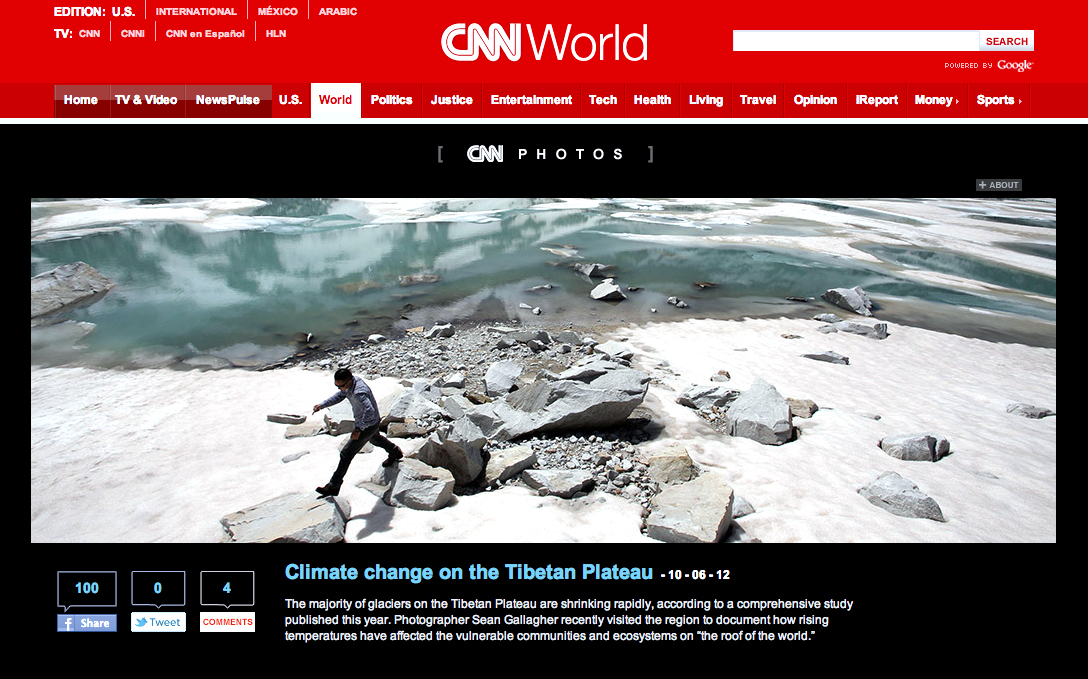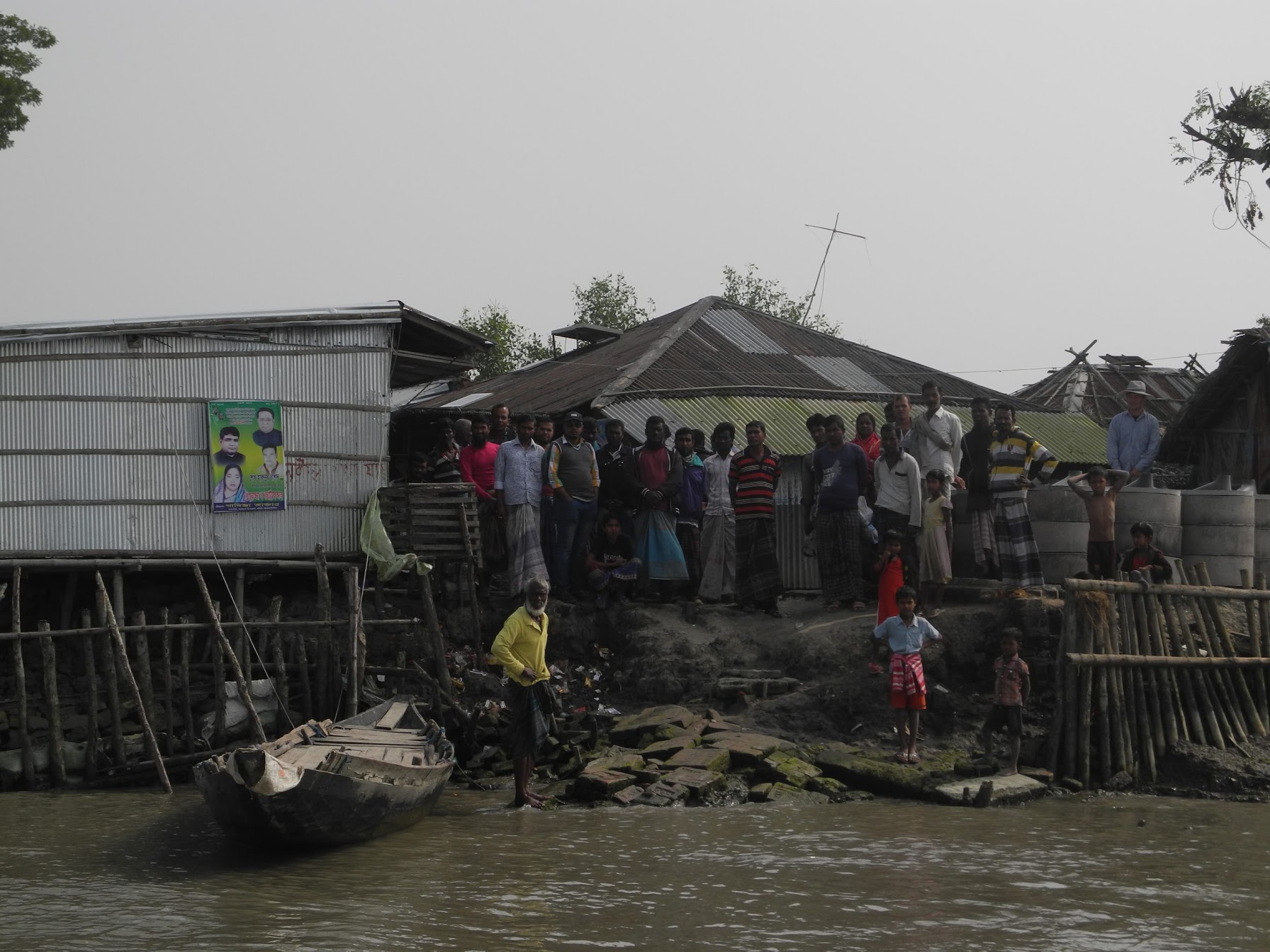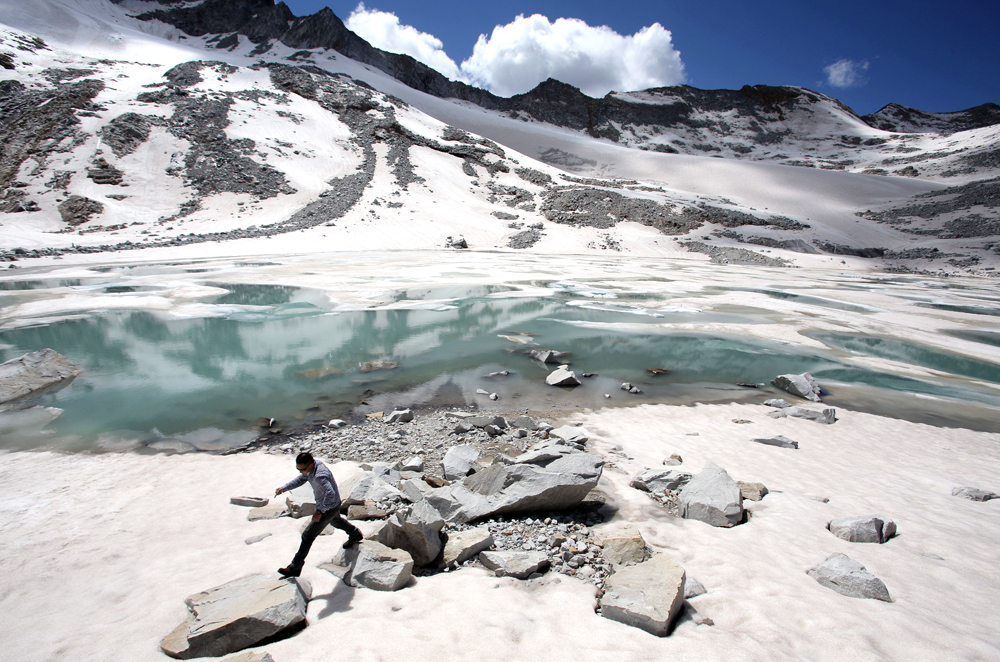
Click here to view the slideshow as featured on CNN.com.
Story by Brett Roegiers, CNN
The majority of glaciers on the Tibetan Plateau in central Asia are shrinking rapidly, according to a comprehensive study published this year in the Nature Climate Change journal.
Photographer Sean Gallagher recently visited the region to document how rising temperatures have affected the vulnerable communities and ecosystems on "the roof of the world."
When he was exploring a crevasse at the base of the Hailuogou glacier in China's Sichuan province, he narrowly dodged a falling rock.
"A glacier is a dynamic thing, always changing in size and position," Gallagher says. "As a result, when you stand inside one you can actually hear it cracking and groaning as it moves."
With an average elevation of nearly 3 miles, the Tibetan Plateau covers an area about one-third the size of the United States. Its glaciers feed many of Asia's largest rivers, providing fresh water for an estimated 2 billion people.
Gallagher spent most of his time on the plateau in western China, traveling to remote parts of the country over the course of a few months. He tried to pack light and work with minimal gear.
"Adapting to the altitude was difficult to begin with," he says. "The decreased levels of oxygen result in your body working much harder than normal."
Supported by the Pulitzer Center on Crisis Reporting, the British photographer has been covering environmental issues in Asia for the past six years.
He says he was shocked to discover the extensive impact of climate change on the Tibetan Plateau.
"Any changes to the supply of water emanating from the plateau will have incredible consequences for the people downstream," Gallagher says.
Experts warn that temperatures in China's highlands have been rising at least twice as fast as the global average. This has led to an increased threat of avalanches and severe flooding.
The higher temperatures have also contributed to the desertification of the area's vast grasslands, where Tibetan nomads have lived off the land for centuries.
In recent years, the Chinese government has relocated tens of thousands of nomads in what has been billed as an attempt to prevent overgrazing and restore the grasslands.
"Unfortunately, this is leading to a disappearance of their traditional culture as they are assimilated into urban society," Gallagher says. "It's a little known effect of how changing temperatures and subsequent policy are contributing to altering people's ways of life in the region."
Ten years ago, Gallagher graduated from Newcastle University in England with a zoology degree. He later decided to pursue a career in photojournalism, which he says he saw as a way for him to communicate his growing concerns about the environment.
He hopes his photographs can play a role in helping people understand the significance of what he sees as a global crisis.
"We can no longer afford to think of environmental issues, such as climate change, as someone else's problem," he says.

Education Resource
Meet the Journalist: Warren Cornwall
Warren Cornwall, a freelance journalist and contributing correspondent to Science magazine, traveled...



